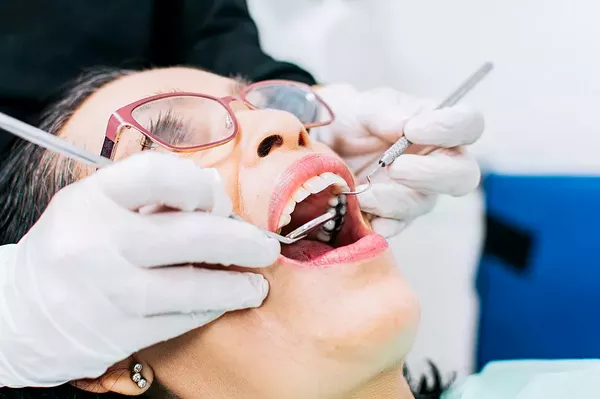Gingivitis is a common and treatable oral health condition that affects the gums. Characterized by inflammation of the gingiva, or gum tissue, gingivitis is often the result of poor oral hygiene practices. While it is a reversible condition, neglecting its treatment can lead to more severe issues such as periodontitis, which can result in tooth loss. This comprehensive guide aims to provide you with a thorough understanding of gingivitis and practical steps to manage and prevent its progression.
I. What is Gingivitis?
Gingivitis is the initial stage of gum disease, often caused by the accumulation of plaque—a sticky film of bacteria—on the teeth and gums. The bacteria in plaque produce toxins that irritate the gums, leading to inflammation. Common signs of gingivitis include redness, swelling, and bleeding of the gums, especially during brushing or flossing.
II. Causes of Gingivitis
Poor Oral Hygiene: Inadequate brushing and flossing allow plaque to build up, leading to gingivitis. Establishing a consistent and effective oral hygiene routine is crucial for preventing and managing this condition.
Smoking and Tobacco Use: Tobacco products can contribute to gum disease by compromising the immune system and reducing blood flow to the gums. Quitting smoking is essential for overall oral health.
Diabetes: Individuals with diabetes are more prone to infections, including gum disease. Managing blood sugar levels is crucial for preventing and controlling gingivitis in diabetic patients.
Hormonal Changes: Hormonal fluctuations, such as those during puberty, menstruation, pregnancy, and menopause, can make gums more susceptible to inflammation. Extra care should be taken during these times to maintain good oral hygiene.
Medical Conditions: Certain medical conditions, such as immune system disorders and blood cell disorders, can increase the risk of gingivitis. Regular dental check-ups and communication with your healthcare provider are essential for managing overall health.
III. Signs and Symptoms
Recognizing the signs and symptoms of gingivitis is crucial for early intervention. Common indicators include:
Bleeding Gums: Gums that bleed during brushing or flossing may indicate inflammation and the presence of gingivitis.
Swollen or Red Gums: Inflammation can cause the gums to appear red, swollen, and tender.
Bad Breath: The toxins produced by bacteria in plaque can lead to persistent bad breath, even after thorough oral hygiene practices.
Receding Gums: Gingivitis can cause the gums to pull away from the teeth, creating pockets where bacteria can accumulate.
Changes in Bite: Shifting teeth or changes in the way your teeth come together when you bite may be a sign of advanced gum disease.
IV. Diagnosing Gingivitis
A dentist or dental hygienist can diagnose gingivitis through a comprehensive examination of your oral health. This may involve:
Visual Inspection: Examining the color and texture of your gums.
Probing: Measuring the depth of the spaces between your teeth and gums to identify signs of gum disease.
Dental X-rays: These can help identify bone loss and other underlying issues not visible during a regular examination.
Regular dental check-ups are crucial for early detection and prompt treatment of gingivitis.
V. Treatment Options
Improved Oral Hygiene: The foundation of gingivitis treatment is maintaining excellent oral hygiene. This includes regular brushing, flossing, and the use of antiseptic mouthwashes to reduce plaque and bacteria.
Professional Dental Cleaning: A dental professional will perform a thorough cleaning to remove plaque and tartar buildup from the teeth and gums. This may involve scaling and root planing to smooth the tooth roots and promote healing.
Medications: In some cases, a dentist may prescribe antimicrobial mouth rinses or topical antibiotics to help control infection and inflammation.
Lifestyle Changes: Quitting smoking, managing diabetes, and addressing any underlying health conditions can contribute to the success of gingivitis treatment.
VI. Home Care and Prevention
Preventing the recurrence of gingivitis requires consistent home care and healthy lifestyle choices:
Brushing: Use a soft-bristled toothbrush and fluoride toothpaste to brush your teeth at least twice a day, paying attention to the gumline and all tooth surfaces.
Flossing: Clean between your teeth daily using dental floss or interdental brushes to remove plaque from areas that a toothbrush cannot reach.
Regular Dental Check-ups: Schedule regular dental appointments for professional cleanings and check-ups to detect and address any issues early on.
Healthy Diet: Maintain a balanced diet rich in fruits, vegetables, and whole grains. Avoid sugary snacks and beverages, as they contribute to plaque formation.
Manage Stress: Stress can affect your immune system and oral health. Practice stress-reducing activities such as exercise, meditation, or yoga.
VII. Complications and Advanced Gum Disease
If left untreated, gingivitis can progress to periodontitis, a more severe form of gum disease that can lead to irreversible damage to the supporting structures of the teeth. Complications may include:
Periodontal Pockets: Spaces between the teeth and gums deepen, providing a haven for bacteria to thrive.
Bone Loss: Periodontitis can lead to the loss of the bone supporting the teeth, causing them to become loose or eventually fall out.
Systemic Health Effects: Advanced gum disease has been linked to an increased risk of certain systemic conditions, including heart disease, diabetes, and respiratory problems.
VIII. Seeking Professional Help
If you suspect you have gingivitis or are experiencing any symptoms of gum disease, it is crucial to seek professional help promptly. A dentist or dental hygienist can provide a proper diagnosis and develop a personalized treatment plan tailored to your specific needs.
IX. Conclusion
Gingivitis is a common and manageable condition that requires attention and commitment to oral health. By understanding the causes, signs, and treatment options, you can take proactive steps to prevent and address gingivitis. Incorporating good oral hygiene practices, making lifestyle changes, and seeking professional dental care will not only help manage gingivitis but also contribute to overall well-being. Remember, a healthy smile begins with a healthy foundation—your gums.





























